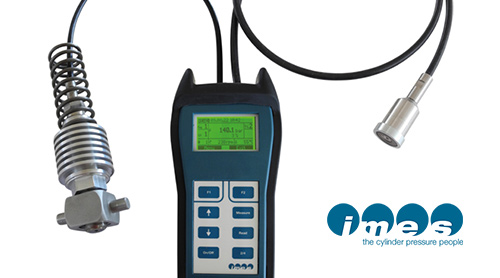Variable compression ratio is designed to make dual-fuel engines more efficient. Engine manufacturer WinGD has now announced the first commercial installations of its VCR (Variable Compression Ratio) technology on two NYK newbuilds.
The Swiss engine developer only presented the VCR technology in June 2023 – after more than a decade of joint development with Mitsui E&S DU (MESDU).
A 95,000 DWT bulk carrier being built at Oshima Shipbuilding and a 7,000 CEU pure car and truck carrier (PCTC) being built at Shin Kurushima Dockyard will be the first ships with two-stroke propulsion that can dynamically optimize combustion depending on the fuel used. According to WinGD, variable compression results in improved emissions, fuel savings and greater fuel flexibility. The two dual-fuel LNG ships are operated by the shipping company NYK Line. [ds_preview]
Variable compression “Breakthrough in two-stroke engine design”
“The simple hydraulic solution mounted on the piston crosshead represents a breakthrough in two-stroke engine design, as it is the first concept to allow the compression ratio to be adjusted, resulting in a significant reduction in greenhouse gas emissions in both diesel and gas operation (around 6% and 3% respectively),” says WinGD. In diesel operation, this corresponds to a saving of around 1,555 tonsof CO2eper year.

Marcel Ott, WinGD General Manager Application & Technical Sales, says: “NYK Line has long been a valued development partner, entrusting WinGD with innovative, sustainability-focused projects, including our first system integration project recently. Strong partnerships make sustainable ships, and it is fitting that this collaboration has now led to the first deployments of VCR, a technology that we believe can have a major impact on the performance of our LNG-fueled X DF engines.”
The first reference vessel for the variable compression technology, an Oshima-built bulk carrier, is expected to be delivered in 2025. It will be powered by a WinGD 6X62DF-2.1 engine. The PCTC is expected to be delivered in 2026 and will be powered by a WinGD 7X62DF-S2.0 engine.
Ship to be equipped with iCER engine in addition to VCR
The PCTC vessel will be the first deployment of WinGD’s new 62-liter short-stroke engine. It will also be one of the first vessels to be fitted with the iCER engine – a compact version of the X-DF2.0 technology that enables further reductions in fuel consumption and emissions while ensuring Tier III NOx compliance in both gas and diesel operation.
The VCR technology is currently available as an option for 62 and 72 bore X-DF engines and, according to WinGD, has no impact on the engine’s footprint or installation requirements.
Just recently, the Swiss engine developer was the first to receive approval for a two-stroke ammonia engine. HANSA also spoke about ammonia engines and innovations such as variable compression in a podcast with Volkmar Galke from WinGD.
























